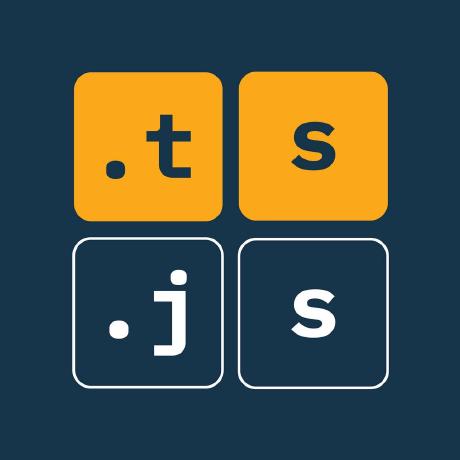Series số 11 này sẽ tìm hiểu về Methods and Interface - Interface and Type assertion . .
Basic Go 11 - Methods and Interface - Interface and Type assertion
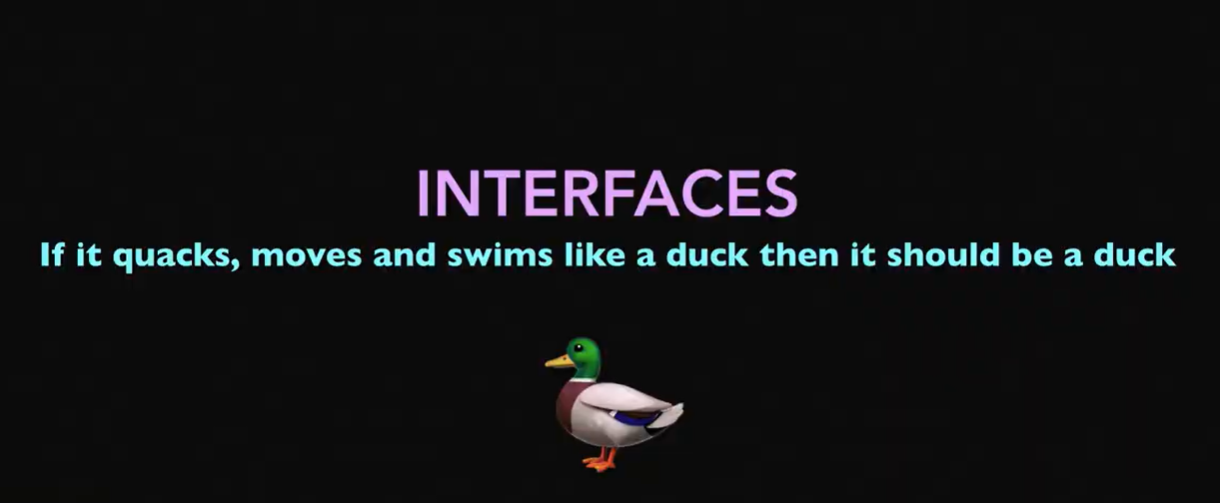
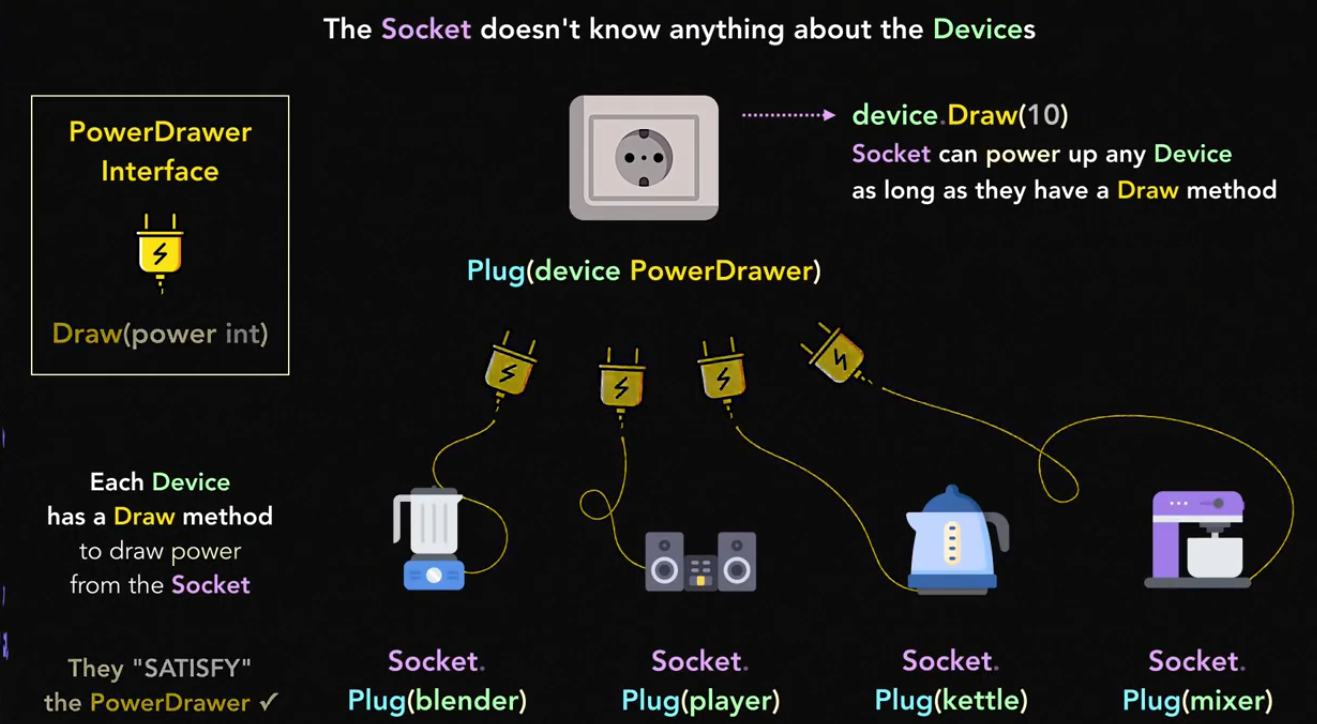
Tổng quan về Interface
Trong go, interface là một loại dữ liệu trưu tượng (abstract type) cho phép chúng ta định nghĩa một giao thức (protocal) hoặc contract giữa các data type cụ thể (concrete types)
Một khi một data type được implement các method mà một interface yêu cầu, nó được xem là "thực hiện" interface đó.
fun fact
"Nếu một con vật kêu quack quack, biết bơi và đi lại như vịt thì nó chắc chắn là một con vịt"
Tương tự, nếu một data type có những hành vi giống như những gì interface yêu cầu, thì nó được coi là data type phù hợp với interface đó.Chúng ta sẽ có 2 thuật ngữ cần lưu ý: Đó là Concrete types và Abstract type
Concrete types : Tất cả các data type không phải interface (như
struct,int,string,v.v) được gọi là concrete type. Đây là data type thực tế mà chúng ta sử dụng nhiều.Abstract types (interface): Interface trong Go là một kiểu trưu tượng.
Nó chỉ định nghĩa ra một loạt các Method mà một kiểu cụ thể nào đó cần phải triển khai.
Interface không định nghĩa chi tiết (behavior) hành vi của các Method, mà chỉ đảm bảo rằng data type nào thực hiện interface đó phải có các Method được chỉ định trong Interface.
Cấu trúc của một Interface như sau :
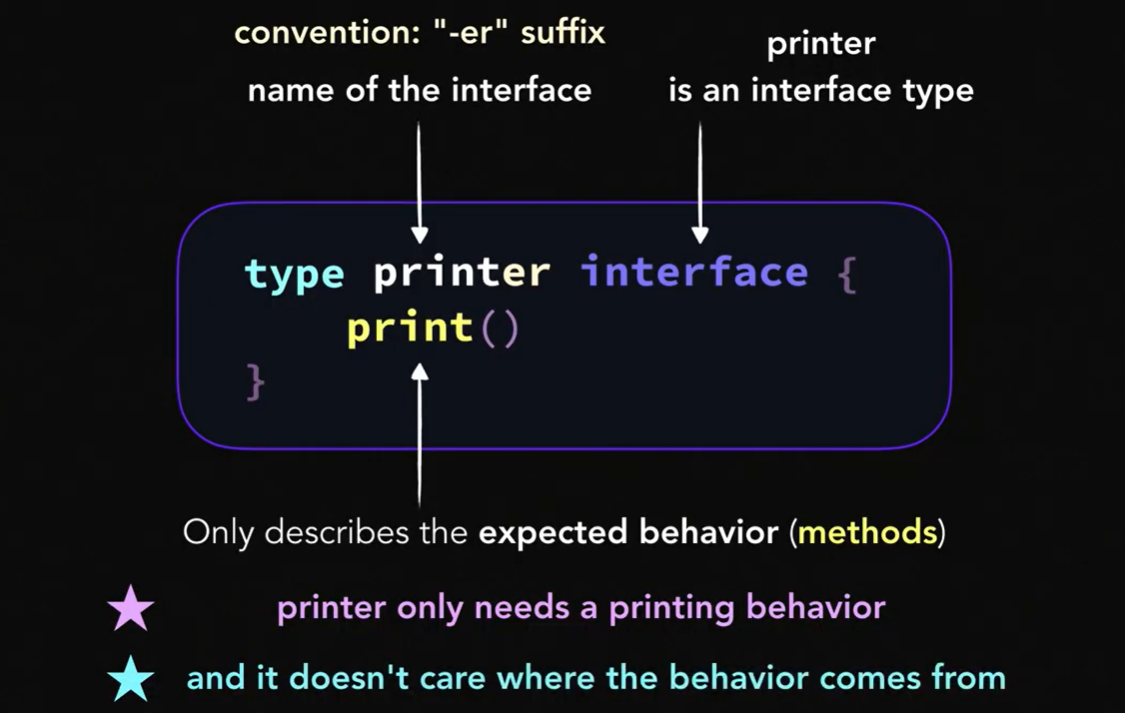
type printer interface {}:printerlà tên của Interface.Tên của Interface thường kết thúc bằng "-er", như một quy ước đặt tên. Ví dụ:
printer,writer,reader. Điều này giúp diễn tả rằng Interface này liên quan đến một hành vi(behavior) cụ thể.
Interface là data type:
printertrong ví dụ này là một Interface type (kiểu dữ liệu Interface). Các kiểu dữ liệu khác có thể thực hiện (implement) Interface này bằng cách cung cấp Method mà Interface yêu cầu.
Method trong Interface:
-
print()là Method mà bất kỳ kiểu dữ liệu nào muốn thực hiện Interfaceprinterđều phải có. Method này không có phần thân, chỉ định nghĩa hành vi(behavior) mà kiểu dữ liệu phải cung cấp.
Nhưng điểm quan trọng của Interface*:
Chỉ mô tả hành vi mong đợi: Interface chỉ mô tả các Method (hành vi) mà đối tượng phải thực hiện, nó không quan tâm đến cách thức hay nơi các Method này được triển khai.
Interface không quan tâm nguồn gốc của hành vi: Interface không cần biết hành vi đó đến từ đâu, miễn là đối tượng thực hiện đầy đủ các Method trong Interface.
File code
//book.go
package main
import "fmt"
type book struct {
title string
price money
}
func (b book) print() {
fmt.Printf("%-15s: %s\n", b.title, b.price.string())
} //game.go
package main
import "fmt"
type game struct {
title string
price money
}
func (g *game) print() {
fmt.Printf("%-15s: %s\n", g.title, g.price.string())
}
func (g *game) discount(ratio float64) {
g.price *= money(1 - ratio)
} // list.go
package main
import "fmt"
type printer interface {
print()
}
type list []printer
func (l list) print() {
if len(l) == 0 {
fmt.Println("Sorry. We're waiting for delivery 🚚.")
return
}
for _, it := range l {
// fmt.Printf("(%-10T) --> ", it)
it.print()
// you cannot access to the discount method of the game type.
// `it` is a printer not a game.
// it.discount(.5)
}
} // main.go
package main
import "fmt"
func main() {
var (
mobydick = book{title: "moby dick", price: 10}
minecraft = game{title: "minecraft", price: 20}
tetris = game{title: "tetris", price: 5}
rubik = puzzle{title: "rubik's cube", price: 5}
)
// only rule: they need to implement the `printer` interface.
// to do that: each type needs to have a print method.
var store list
store = append(store, &minecraft, &tetris, mobydick, rubik)
store.print()
// interface values are comparable
fmt.Println(store[0] == &minecraft)
fmt.Println(store[3] == rubik)
} //money.go
package main
import "fmt"
type money float64
func (m money) string() string {
return fmt.Sprintf("$%.2f", m)
} // puzzle.go
package main
import "fmt"
type puzzle struct {
title string
price money
}
// if you remove this method,
// you can no longer add it to the `store` in `main()`.
func (p puzzle) print() {
fmt.Printf("%-15s: %s\n", p.title, p.price.string())
}Chúng ta có:
book.go: Typebookvà Methodprint()game.go: Typegamevà Methodprint(),discount.puzzle.go: Typepuzzlevà Methodprint()list.go: Interfaceprintervà Typelistchứa các đối tượng thực hiện interface này.
Chúng ta thấy rằng trong file list.go có định nghĩa một Interfaces printer và yêu cầu Method print() phải được triển khai bơii các Data type tham gia vào.
Và ở file main.go có var store list biến store thuộc type list và list này là một slice của các đối tượng thực hiện interface printer. Nói cách khác thì list là 1 danh sách (slice) chứa các đối tượng có Method print() (Các đối tượng thực hiện interface printer).
Đối với Go sẽ sử dụng cơ chế duck typing : "Nếu một data type đi lại, bơi và kêu quack quack như một con vịt thì nó là một con vịt". Cụ thể trong trường hợp của chúng ta.
- Nếu một data type có method print(), nó có thể được coi là một
printer. Chúng ta không cần phải khai báo cụ thể rằngbook,game, haypuzzle"thực hiện" interfaceprinterMiễn là chúng có Methodprint()thì sẽ tự động thoả mãn yêu cầu của interface.
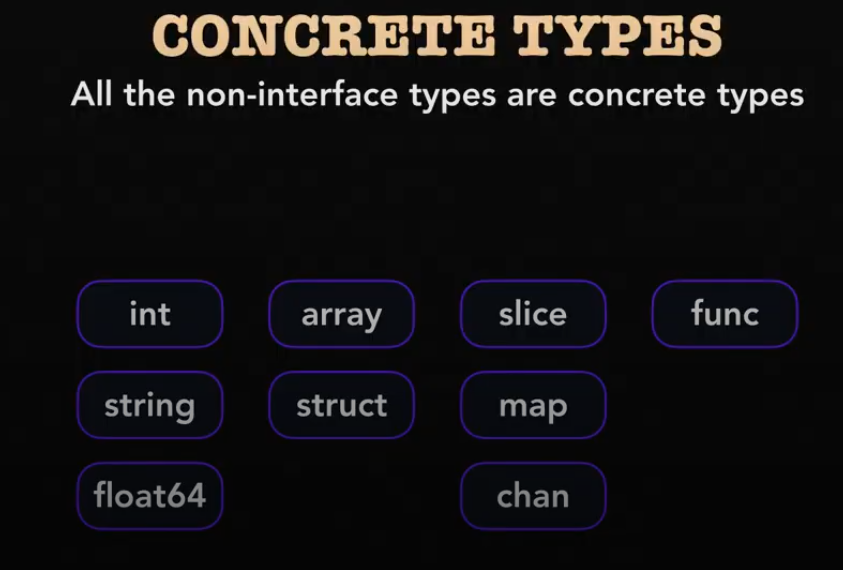
Concrete type
Như đã đề cập ban đầu. Tất cả các kiểu dữ liệu không phải là interface được gọi là concrete types.
Đây là các kiểu cụ thể như book, game, và puzzle, đã được định nghĩa trong các file book.go, game.go, và puzzle.go.
Giải thích chi tiết về Concrete Types
Một concrete type là một kiểu có định nghĩa đầy đủ về dữ liệu mà nó lưu trữ và các Method mà nó cung cấp. Các kiểu như int, float64, struct, và bất kỳ struct tùy chỉnh nào mà chúng ta định nghĩa đều là concrete types.
Trong ví dụ của chúng ta:
booklà một concrete type được định nghĩa với các trườngtitlevàprice. Nó có một Methodprint()để in thông tin chi tiết về cuốn sách.gamelà một concrete type với các trường tương tự như book, nhưng thêm Methoddiscount()để thay đổi giá.puzzlelà một concrete type cũng với các trường title và price, có Methodprint()để thoả mãn interfaceprinter.
Các concrete type như book, game, và puzzle có thể được lưu trữ trong một list (được định nghĩa là một slice của printer). Khi chúng ta thêm các đối tượng như &minecraft, &tetris, mobydick, và rubik vào store trong main.go, điều này minh hoạ rằng các concrete types này hoàn toàn tương thích với interface printer:
var store list
store = append(store, &minecraft, &tetris, mobydick, rubik)Ở đây, store chứa một tập hợp các giá trị là các concrete types khác nhau (*game, book, puzzle), tất cả đều thực hiện interface printer.
Type Assertion
Code File
//book.go
package main
import "fmt"
type book struct {
title string
price money
}
func (b book) print() {
fmt.Printf("%-15s: %s\n", b.title, b.price.string())
} //game.go
package main
import "fmt"
type game struct {
title string
price money
}
func (g *game) print() {
fmt.Printf("%-15s: %s\n", g.title, g.price.string())
}
func (g *game) discount(ratio float64) {
g.price *= money(1 - ratio)
} //list.go
package main
import "fmt"
type printer interface {
print()
// use type assertion when you cannot change the interface.
// discount(ratio float64)
}
type list []printer
func (l list) print() {
if len(l) == 0 {
fmt.Println("Sorry. We're waiting for delivery 🚚.")
return
}
for _, it := range l {
it.print()
}
}
// type assertion can extract the wrapped value.
// or: it can put the value into another interface.
func (l list) discount(ratio float64) {
// you can declare an interface in a function/method as well.
// interface is just a type.
type discounter interface {
discount(float64)
}
for _, it := range l {
// you can assert to an interface.
// and extract another interface.
if it, ok := it.(discounter); ok {
it.discount(ratio)
}
}
} //main.go
package main
func main() {
var (
mobydick = book{title: "moby dick", price: 10}
minecraft = game{title: "minecraft", price: 20}
tetris = game{title: "tetris", price: 5}
rubik = puzzle{title: "rubik's cube", price: 5}
yoda = toy{title: "yoda", price: 150}
)
var store list
store = append(store, &minecraft, &tetris, mobydick, rubik, &yoda)
store.discount(.5)
store.print()
} //money.go
package main
import "fmt"
type money float64
func (m money) string() string {
return fmt.Sprintf("$%.2f", m)
} //puzzle.go
package main
import "fmt"
type puzzle struct {
title string
price money
}
func (p puzzle) print() {
fmt.Printf("%-15s: %s\n", p.title, p.price.string())
} // toy.go
package main
import "fmt"
type toy struct {
title string
price money
}
func (t *toy) print() {
fmt.Printf("%-15s: %s\n", t.title, t.price.string())
}
func (t *toy) discount(ratio float64) {
t.price *= money(1 - ratio)
}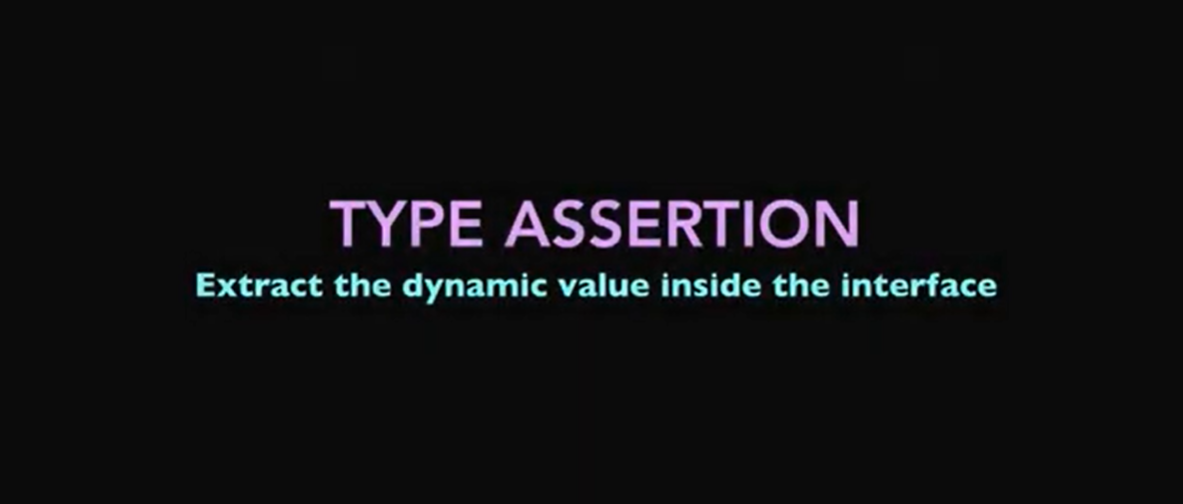
Khi làm việc với các interface trong Go, một khái niệm quan trọng là type assertion. Đây là cách để trích xuất giá trị động được bọc trong interface và truy cập đầy đủ các Method cũng như dữ liệu của nó. 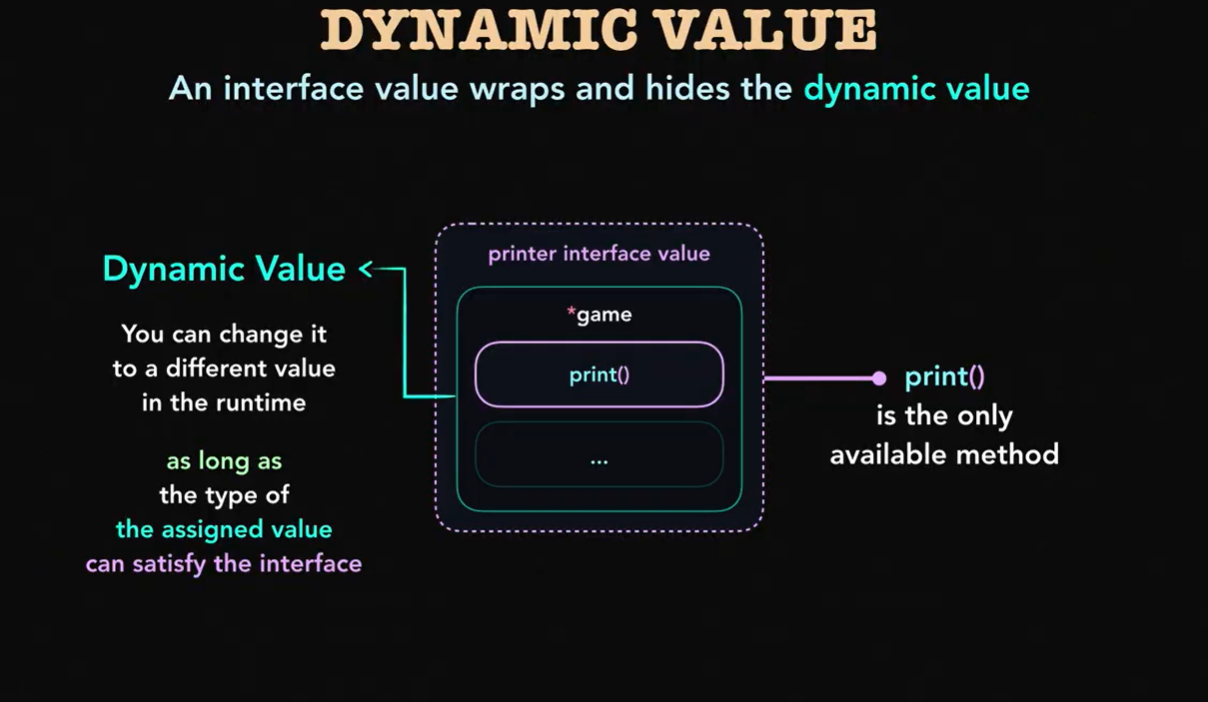
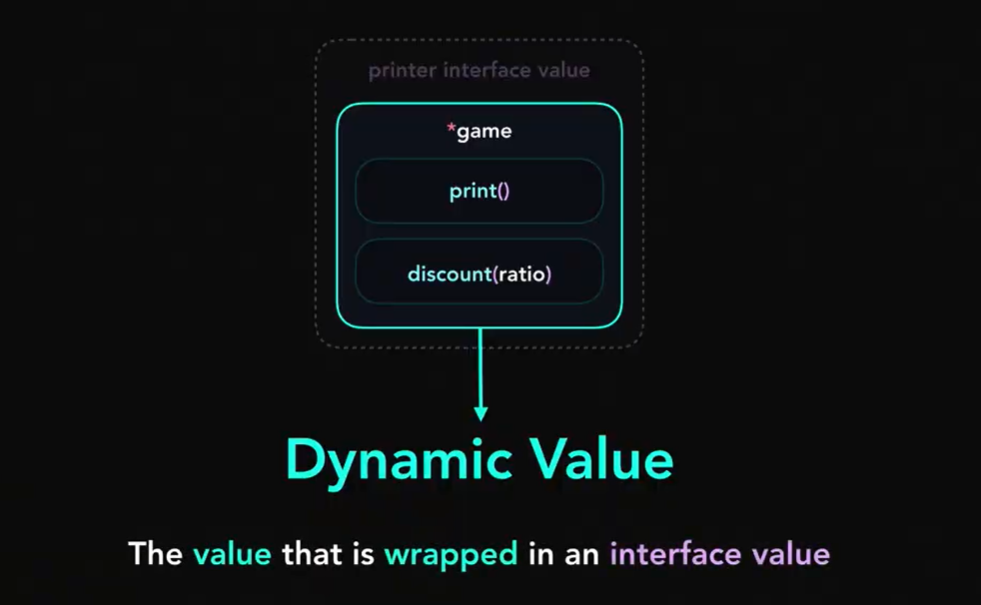
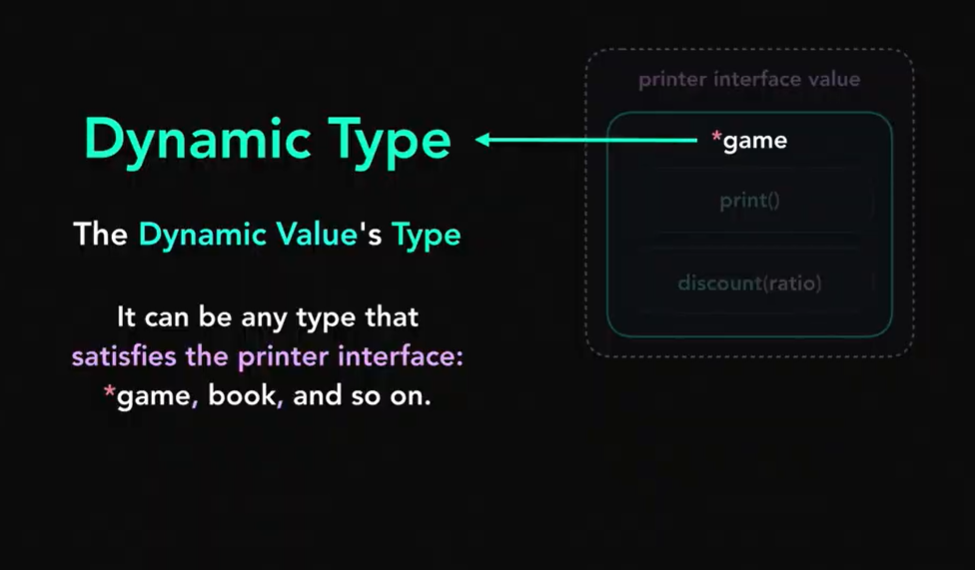
Interface value Và Dynamic value
Interface value: Một giá trị interface trong Go không lưu trữ trực tiếp dữ liệu mà bọc (wrap) và ẩn (hides) giá trị thực bên trong, được gọi là Dynamic value.
Dynamic Value: Giá trị thực được bọc bên trong interface có thể là bất kỳ kiểu nào miễn là nó thỏa mãn interface đó. Bạn có thể thay đổi giá trị động này tại thời điểm runtime, miễn là kiểu mới tiếp tục thỏa mãn interface.
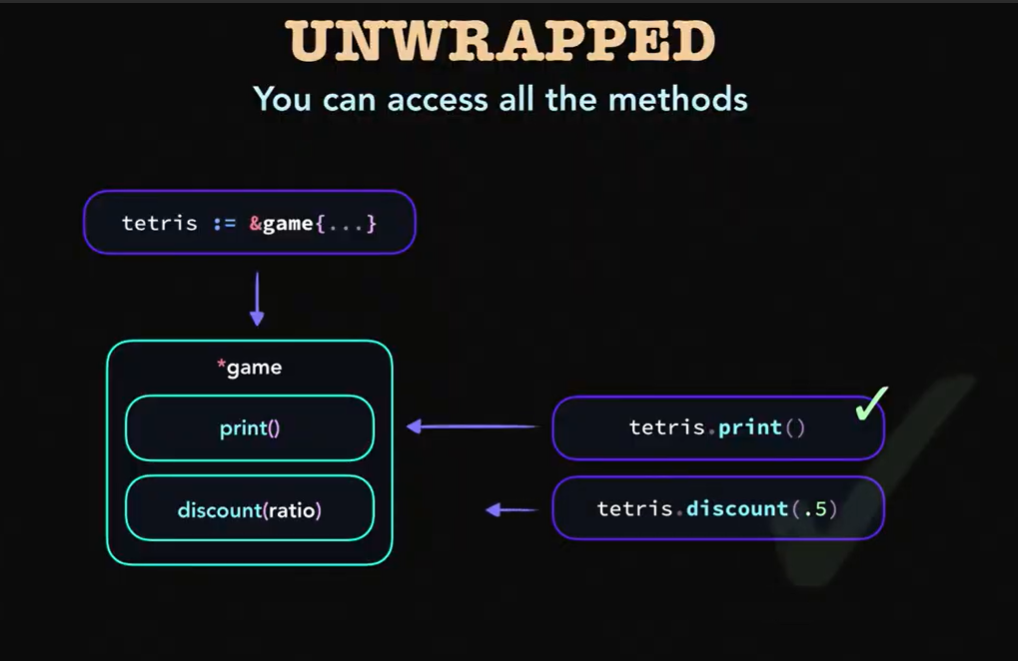
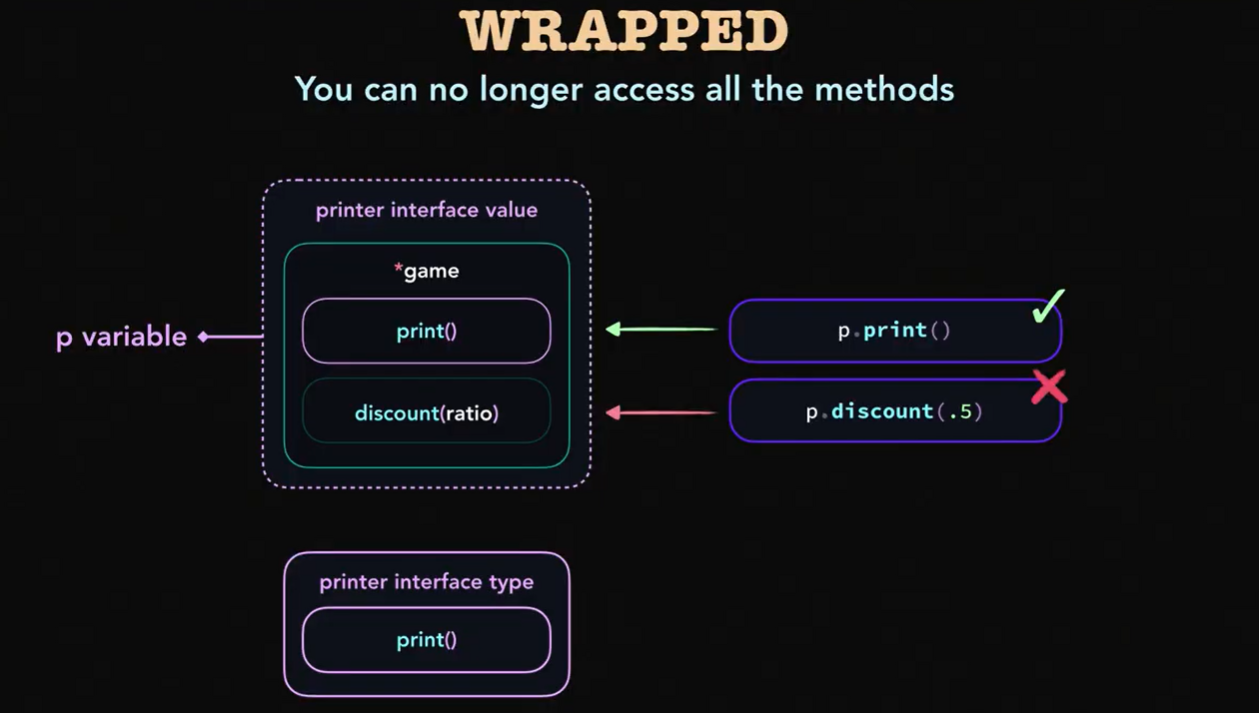
Sự khác biệt giữa Wrapped và Unwrapped.
Wrapped: Khi giá trị vẫn còn được bọc trong interface, bạn chỉ có thể gọi các Method được định nghĩa trong interface đó. Các Method khác của kiểu cụ thể sẽ không thể truy cập được.
Unwrapped: Khi bạn dùng type assertion để trích xuất giá trị động, bạn có thể truy cập tất cả các Method và thuộc tính của kiểu cụ thể. Điều này giúp bạn làm việc với các Method mở rộng không có trong interface.
Type Assertion
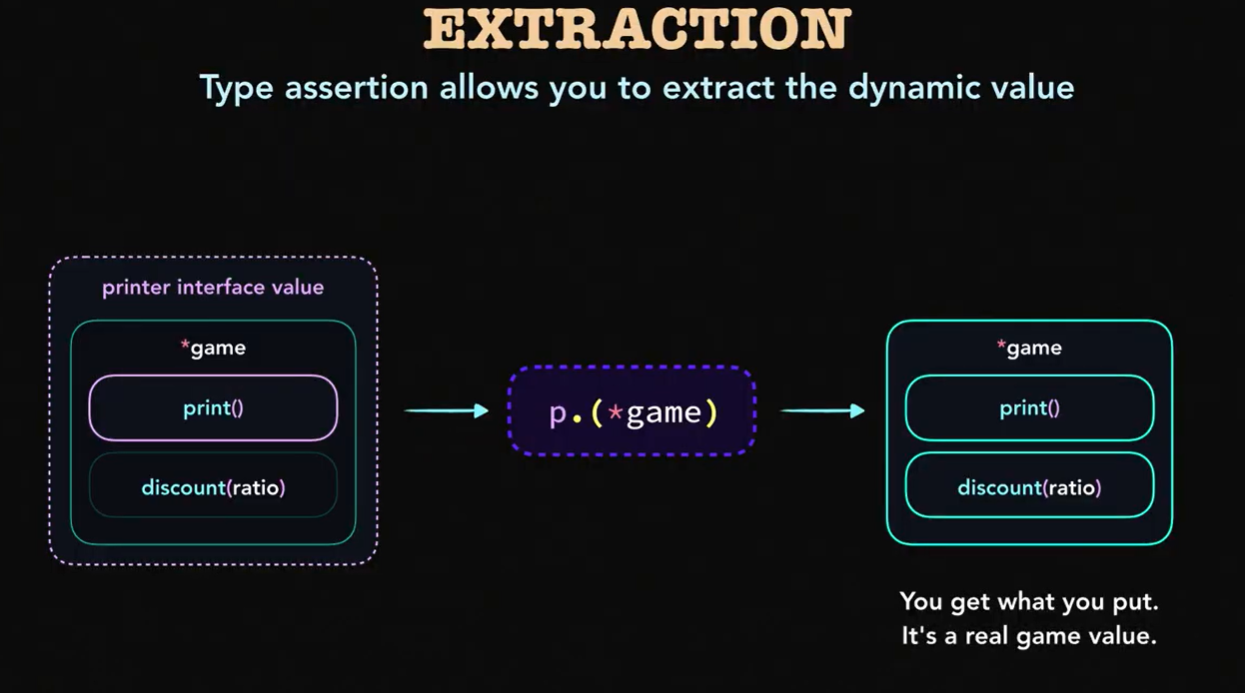
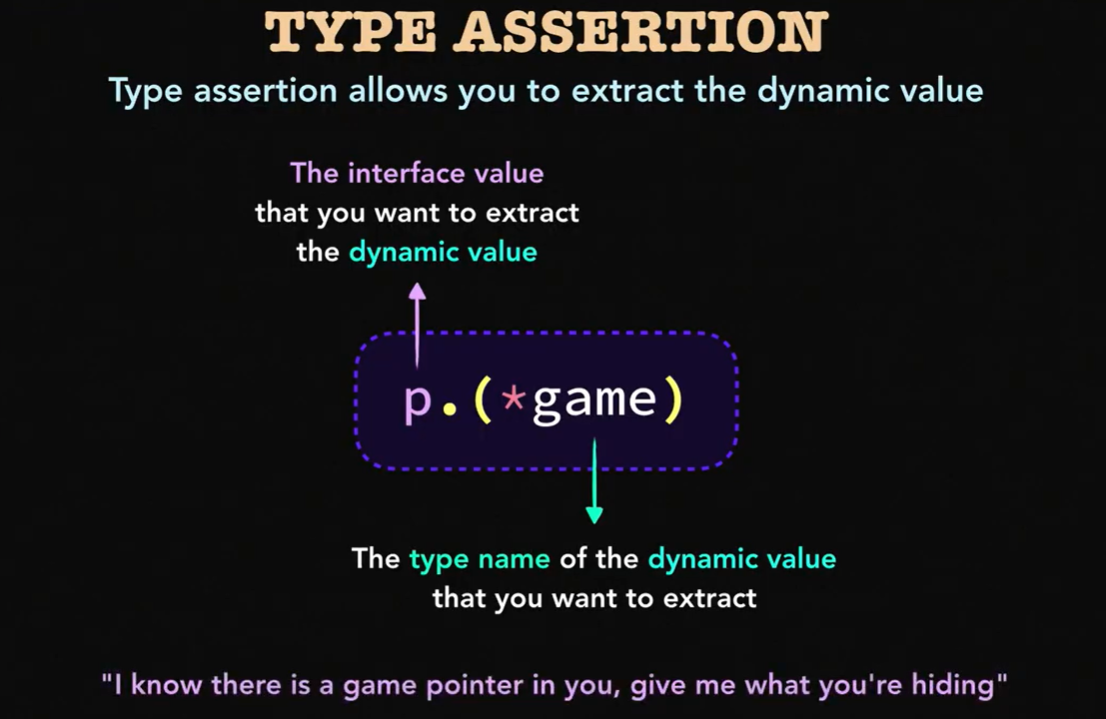
Type assertion cho phép bạn lấy giá trị động từ một interface. Cách thực hiện type assertion:
Cú pháp:
value, ok := interfaceValue.(ConcreteType).interfaceValue: Giá trị interface mà bạn muốn trích xuất.ConcreteType: Tên kiểu của giá trị động mà bạn muốn trích xuất.ok: Boolean xác nhận type assertion có thành công hay không.
Ví dụ
Trong ví dụ của chúng ta, bạn có thể sử dụng type assertion để truy cập method discount() chỉ có trong game và toy:
func (l list) discount(ratio float64) {
type discounter interface {
discount(float64)
}
for _, it := range l {
// Type assertion để kiểm tra và trích xuất giá trị động
if it, ok := it.(discounter); ok {
it.discount(ratio)
}
}
}Ở đây, chúng ta duyệt qua từng phần tử trong
listvà sử dụngtype assertionit.(discounter)để kiểm tra xem phần tử có thực hiện interfacediscounter(có methoddiscount()) hay không.Nếu
type assertionthành công (ok == true),itsẽ là một giá trịdiscountervà ta có thể gọi methoddiscount()trên đó.
func main() {
var (
mobydick = book{title: "moby dick", price: 10}
minecraft = game{title: "minecraft", price: 20}
tetris = game{title: "tetris", price: 5}
rubik = puzzle{title: "rubik's cube", price: 5}
yoda = toy{title: "yoda", price: 150}
)
var store list
store = append(store, &minecraft, &tetris, mobydick, rubik, &yoda)
// Áp dụng giảm giá với type assertion
store.discount(.5)
store.print()
}store.discount(.5)sẽ gọi methoddiscount()của bất kỳ phần tử nào trongstorecó method này, nhờ vào type assertion.
Empty Interface.
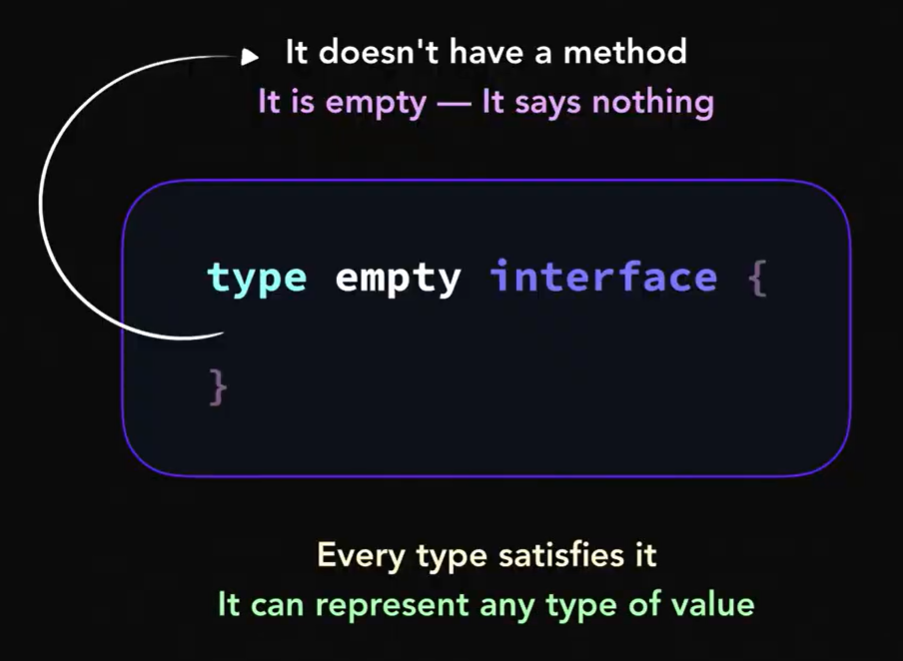
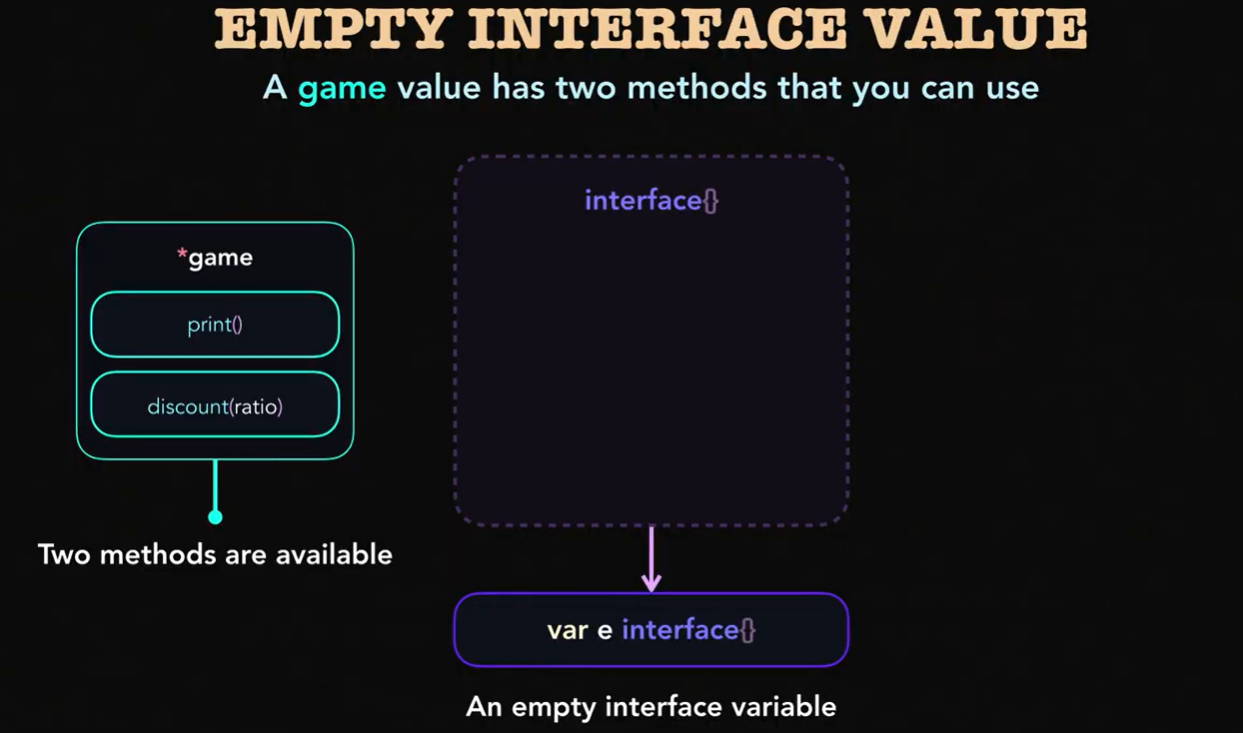
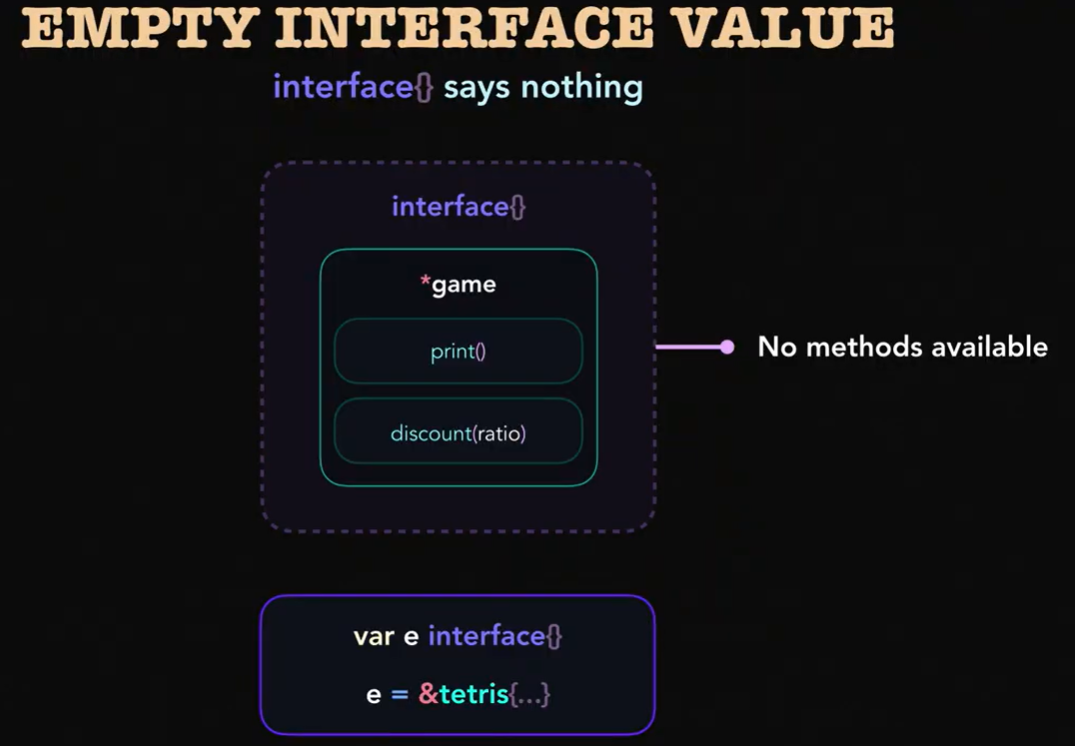
- Tiếp theo chúng ta sẽ tìm hiểu về Empty Interface (
interface{}) nó không chứa bất kỳ phương thức nào, nghĩa là "mọi kiểu dữ liệu trong Go đều tương thích với empty interface".
var temp interface {}Ở đây nó có thể lưu trữ bất kỳ giá trị nào, dù là kiểu dữ liệu nguyên thuỷ (int string float) hay phức tạp như struct slice.
Vậy nên Empty Interface khá hữu ích trong nhưng trường hợp mà không biết trước kiểu dữ liệu.
Cấu trúc bên trong của Empty interface.
- Khi một giá trị được lưu trữ trong
interface{}, nó thực sự là 1 cặp: - Bao gồm: Dynamic type , Dynamic value
- Khi một giá trị được lưu trữ trong
interface {} = (dynamic type,dynamic value)
// example
var tmp interface{} = 42
// => tmp = {int , 42}Và 1 điều chú ý khi làm việc với Empty Interface. Dù cho Empty interface rất linh hoạt nhung việc lạm dụng nó có thể gây ra các vấn đề như :
Mất an toàn kiểu dữ liệu (Type safetye): Empty interface bỏ qua kiểm tra kiểu tại thời gian biên dịch (compile-time), dẫn đến lỗi runtime nếu type assertion thất bại.
Khó hiểu và khó bảo trì: Vì các kiểu dữ liệu không được xác định rõ ràng nên có thể bạn sẽ mất nhiều thời gian để debug và kiểm tra nó.
Interface Embedding:
Interface Embedding cho phép bạn Gộp nhiều interface nhỏ lại với nhau. Một trong những kỹ thuật để tổ chức và quản lý hành vi của methods liên quan mà không cần lặp lại mã nguồn.
type InterfaceA interface {
MethodA()
}
type InterfaceB interface {
MethodB()
}
type InterfaceC interface {
InterfaceA
InterfaceB
MethodC()
}Example:
Đầu tiên định nghĩa interface.
package main
import "fmt"
type Reader interface {
Read()
}
type Writer interface {
Write()
}
type ReadWriter interface {
Reader
Writer
}Sau đó tạo struct để implement Interface
type File struct {
Name string
}
func (f File) Read() {
fmt.Println(f.Name, "is being read.")
}
func (f File) Write() {
fmt.Println(f.Name, "is being written.")
}Cuối cùng là sẽ được kết quả như này
func Process(rw ReadWriter) {
rw.Read()
rw.Write()
}
func main() {
file := File{Name: "example.txt"}
Process(file) // File thực hiện ReadWriter, nên tương thích.
}txt1.txt is being read.
txt2.txt is being written.Hoặc 1 ví dụ khác như sau.
Định nghĩa interface
package main
import "fmt"
type Shape interface {
Area() float64
}
type Drawable interface {
Draw()
}
type Renderable interface {
Shape
Drawable
Description() string
}Cho Struct implement Interface
type Circle struct {
Radius float64
}
// Implement method from shape
func (c Circle) Area() float64 {
return 3.14 * c.Radius * c.Radius
}
// Implement method Drawable
func (c Circle) Draw() {
fmt.Println("Drawing a circle with radius", c.Radius)
}
// And the last one is method of Renderrable
func (c Circle) Description() string {
return fmt.Sprintf("Circle with radius %.2f", c.Radius)
} func main() {
c := Circle{Radius: 5}
var r Renderable = c
fmt.Println(r.Description())
fmt.Println("Area:", r.Area())
r.Draw()
}Kết quả :
Circle with radius 5.00
Area: 78.50
Drawing a circle with radius 5Điều quan trọng khi sử dụng Embedding Interface
- Interface embedding chỉ kế thừa method còn đối với struct embedding thì kế thừa field và method.
Dont Touch Interface Everything.
Một việc sai lầm khi một số người lạm dụng Interface, Tạo interface cho mọi thứ - cho tất cả data type - cho tất cả hành vi ngay cả khi không cần thiết.
type Printer interface {
Print()
}
type ConcretePrinter struct{}
func (cp ConcretePrinter) Print() {
fmt.Println("Printing...")
}
func main() {
var p Printer = ConcretePrinter{}
p.Print()
}- Ngay cả khi chỉ có 1 data type ConcretePrinter implement interface này.
thay vì :
func Process(p Printer) {
p.Print()
}Chúng ta chỉ cần:
func Process(p ConcretePrinter) {
p.Print()
}Chỉ nên sử dụng khi Mutiple Implementations
type Notifier interface {
Notify(message string)
}
type EmailNotifier struct{}
func (e EmailNotifier) Notify(message string) {
fmt.Println("Sending email:", message)
}
type SMSNotifier struct{}
func (s SMSNotifier) Notify(message string) {
fmt.Println("Sending SMS:", message)
}
func SendAlert(n Notifier) {
n.Notify("Critical system alert!")
}
func main() {
email := EmailNotifier{}
sms := SMSNotifier{}
SendAlert(email)
SendAlert(sms)
}Vậy nên việc lạm dụng Interface làm cho mất tính đơn giản hoá.
- Không lạm dụng
type User struct {
Name string
Email string
}
func SaveUser(user User) {
fmt.Println("User saved:", user.Name)
}- Lạm dụng
type Savable interface {
Save()
}
type User struct {
Name string
Email string
}
func (u User) Save() {
fmt.Println("User saved:", u.Name)
}
func Process(s Savable) {
s.Save()
}- Trong trường hợp này vì chỉ có
usernên việc sử dụng interface là không cần thiết.
Khó bảo trì và theo dõi.
- Tốn nhiều thời gian để debug và hiểu đường flow logic code.
Quy tắc vàng khi sử dụng Interface.
- Interface Nhỏ gọn và cụ thể: Luôn luôn thiết kế 1 interface nhỏ gọn và tập chung vào 1 hành vi cụ thể.
// Không nên
type DataHandler interface {
Read()
Write()
Close()
Seek(offset int64, whence int) (int64, error)
Flush()
} // Nên
type Reader interface {
Read()
}
type Writer interface {
Write()
}
type Closer interface {
Close()
}
type Flusher interface {
Flush()
}
type Seeker interface {
Seek(offset int64, whence int) (int64, error)
}
// Với cách này bạn có thể gộp các interface nhỏ lại khi cần thiết
// type ReadWriter interface {
// Reader
// Writer
// }Tránh
interface{}khi có thể:Vì nó làm mất an toàn sử liệu có thể gây ra lỗi runtime khá nhiều và việc debug rất cực.
Chỉ sử dụng khi không biết trước kiểu dữ liệu cần xử lý.
func Sum(values []interface{}) int {
total := 0
for _, v := range values {
total += v.(int) // Cần type assertion, dễ gây lỗi runtime.
}
return total
}
// Nếu không type assertion sẽ gây lỗi runtime vì vậy việc đưa interface vào đây sẽ không nên khi đã biết trước kiểu dữ liệu